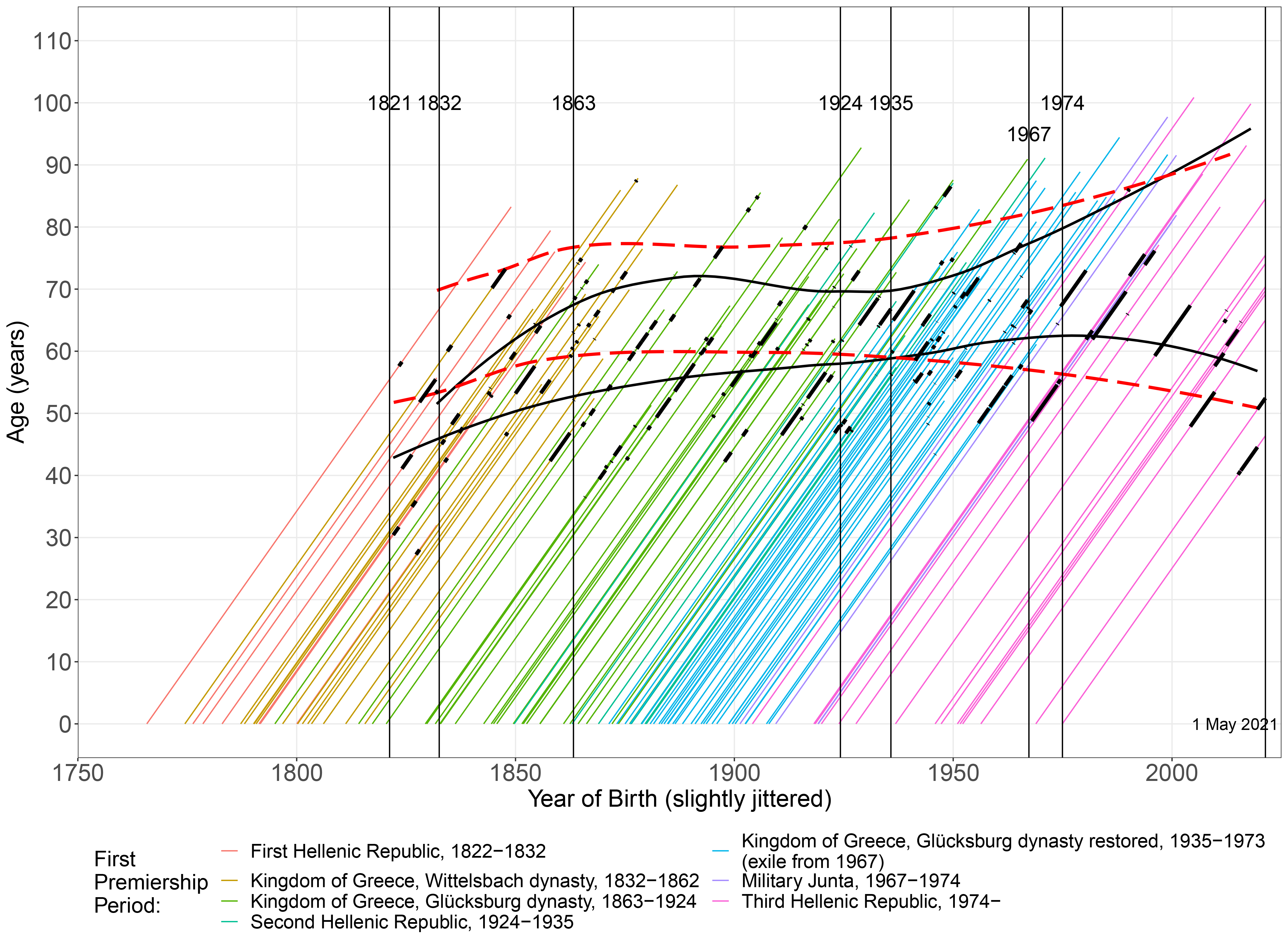
Thursday, 25 March 2021 saw Bicentenary Independence Day celebrations in Greece. Much of present-day Greece was under Ottoman occupation from the mid-15th century, with its identity being partly preserved by the Greek Orthodox Church. Eventually, Greek fighters, who were encouraged by increasing opposition to Ottoman rule, inspired by events associated with the French Revolution and supported financially by exiles, launched an insurrection at the monastery of Agia Lavra in the Peloponnese, where they raised a revolutionary flag on 25 March 1821.
The War of Independence that followed involved Europeans sympathetic to the Greek cause including Lord Byron, who expressed his support for this struggle in his poem Childe Harold’s Pilgrimage, the first parts of which appeared in 1812. Byron died in Missolonghi, western Greece while leading rebel forces in April 1824. His death hastened the involvement of Britain, France and Russia in the independence struggle, which in turn led to the Conference of Poros and then the establishment of the first borders of Greece in 1832.
To mark Greece’s independence celebrations, we perform an analysis of the life span of the country’s prime ministers (PMs) that is similar to our previous work based on British PMs. One of the aims of that contribution and of the article “Statistically speaking… How long can Pope Francis expect to live?” was to show how historical datasets can provide insights into long-term political processes. Here, we use data that we obtained from Wikipedia and Phantis.com wiki, and divide our analysis into seven distinct political periods that followed Greece’s independence: First Hellenic Republic (1822–32); Kingdom of Greece, Wittelsbach dynasty (1832–62); Kingdom of Greece, Glücksburg Dynasty (1863–1924); Second Hellenic Republic (1924–35); Kingdom of Greece, Glücksburg Dynasty restored (1935–73; King Constantine II was in exile from December 1967, after a failed counter-coup); Military Junta (1967–1974); Third Hellenic Republic (1974–).
The first PM (or equivalent) in our dataset is Alexandros Mavrokordatos (PM: 1822–23, 1833–34, 1841, 1844 and 1854–55), while the current incumbent is Kyriakos Mitsotakis (2019–). PMs holding office more than once are recorded in the data each time they take power, meaning that there are 192 entries coming from 106 people (all but one male), nine of whom are presently alive. The number of PMs in each of the political periods is given in Table 1.
Table 1: The number of PMs and the average number PMs per year for each of the seven political periods, the approximate length of which is also given. PMs holding office more than once are counted each time they take power.
| Period | Approximate length (years) | Number of PMs | Average number of PMs per year |
| First Hellenic Republic, 1822–1832 | 11.0 | 7 | 0.6 |
| Kingdom of Greece, Wittelsbach dynasty, 1832–1862 (excluding King Otto and Alexandros Mavrokordatos 1841) | 30.7 | 22 | 0.7 |
| Kingdom of Greece, Glücksburg Dynasty, 1863–1924 | 61.0 | 83 | 1.4 |
| Second Hellenic Republic, 1924–1935 | 11.5 | 12 | 1.0 |
| Kingdom of Greece, Glücksburg Dynasty restored, 1935–1973 (exile from 1967) | 31.5 | 46 | 1.5 |
| Military Junta, 1967–1974 | 7.7 | 4 | 0.5 |
| Third Hellenic Republic, 1974– | 46.3 (continuing) |
18 | 0.4 |
The number of PMs per year in each period is also given Table 1, suggesting that the two periods of the Glücksburg Dynasty saw a lot of political activity.
The youngest PM of Greece was Georgios Mavromichalis (1827–28) who was around 27 years old when he took office. The youngest PM after the First Hellenic Republic was Epameinontas Deligeorgis (briefly in 1865 twice, July–December 1870, 1872–1874, briefly in 1876, March–June 1877) who was 36.8 years old. The oldest was Xenophon Zolotas (1989–90) at 85.6 years. The longest unbroken Premiership was that of Costas Simitis (1996–2004) of 8.13 years, followed by Andreas Papandreou (1981–1989) of 7.7 years. Some PMs, for example Greece’s only woman PM Vassiliki Thanou-Christophilou (August–September 2015), have periods of office as short as a month because they are appointed for administrative reasons while elections are underway. So far, two PMs have lived around 100 years: Xenophon Zolotas (100.5 years) and Constantine Mitsotakis (1990–93, 98.6 years).
We analyzed the time-related patterns of age at first term and age at death for PMs of Greece by means of Figure 1, produced using the R package ggplot2. Figure 1 is a Lexis diagram and illustrates the utility of such plots for displaying life event data as does the excellent discussion of Hanley, Carrieri and Serraino (2006).1

Figure 1: Life trajectories of PMs of Greece with premiership periods in black. The colours indicate the political period in which the first premiership took place. Loess-based smoothers for age at death (upper) and for age at start of first premiership (lower) are shown using black curves. The corresponding curves for UK PMs are shown using red dashed lines.
Life spans of Greek PMs tended to increase strongly from about 1832 to somewhat before 1900 and then again after 1935. This is similar to the pattern for UK PMs, who generally lived longer than Greek PMs, with smaller differences across time. The age at the start of the first premiership steadily increased in Greece until the 1980s. The pattern for the UK is again quite similar, with starting ages increasing until around the 1870s and then decreasing. The relatively few PMs associated with the long and continuing Third Hellenic Republic (1974–) is also noticeable from the greater spacing of the life trajectories in recent times.
We hope that this note has further illustrated how analyzing historical datasets can provide insights into political processes. As Prince Charles said, attending the Bicentenary Dinner in Athens: “Χαίρε, ω χαίρε, Ελευθεριά. Ζήτω η Ελλάς!” (“Hail, O Hail Liberty. Long Live Greece!”)
About the authors
Julian Stander is associate professor in mathematics and statistics, Centre for Mathematical Sciences, University of Plymouth. He has applied Bayesian statistical methodology to a range of application areas and is also interested in statistical education.
Katerina Tzioli is a mathematician and senior officer who works in the digital transformation and innovation section in the banking sector in Greece.
Mario Cortina Borja is chairman of the Significance editorial board, and professor of biostatistics in Population Policy and Practice Teaching and Research Department, at the Great Ormond Street Institute of Child Health, University College London. He has worked in many scientific areas as an applied statistician.
Reference
- Hanley, J. A., Carrieri, M. P. and Serraino, D. (2006) Statistical fallibility and the longevity of popes: William Farr Meets Wilhelm Lexis, Letter to the Editor. International Journal of Epidemiology, 35, 802–805.
Editor’s note
Article was corrected on 6 May 2021: it is nine (current and former) Greek PMs who are presently alive, not 10 as originally stated. Figure 1 has also been updated to make this clear visually.




